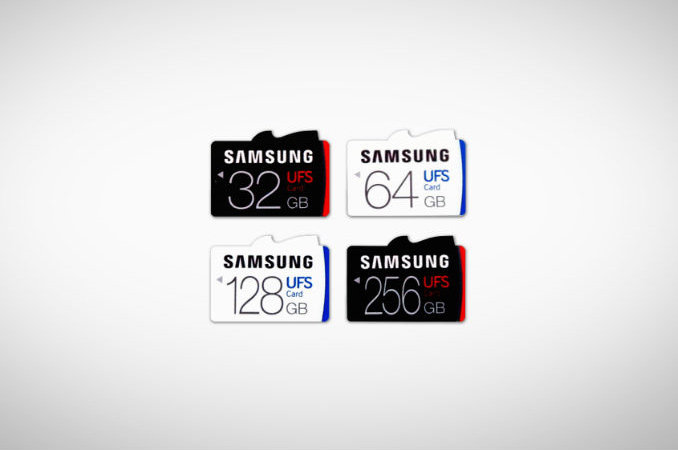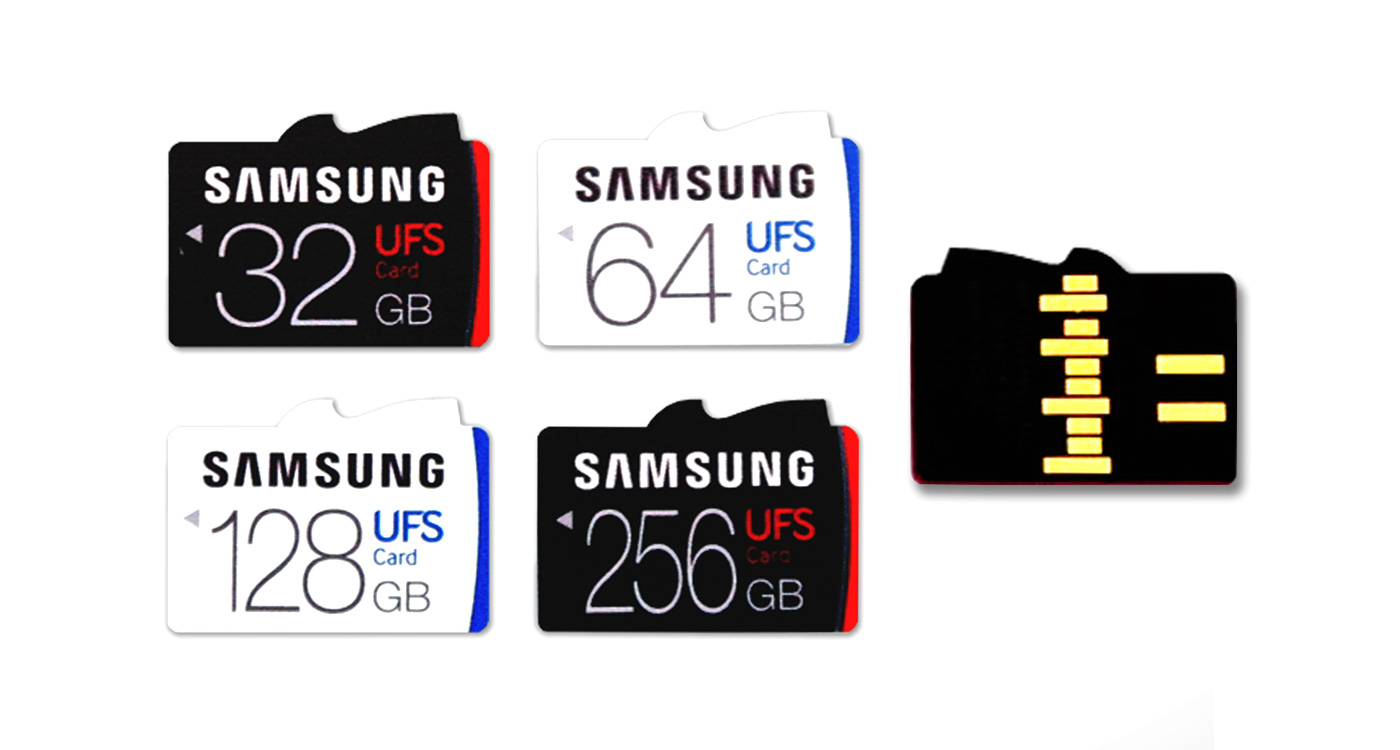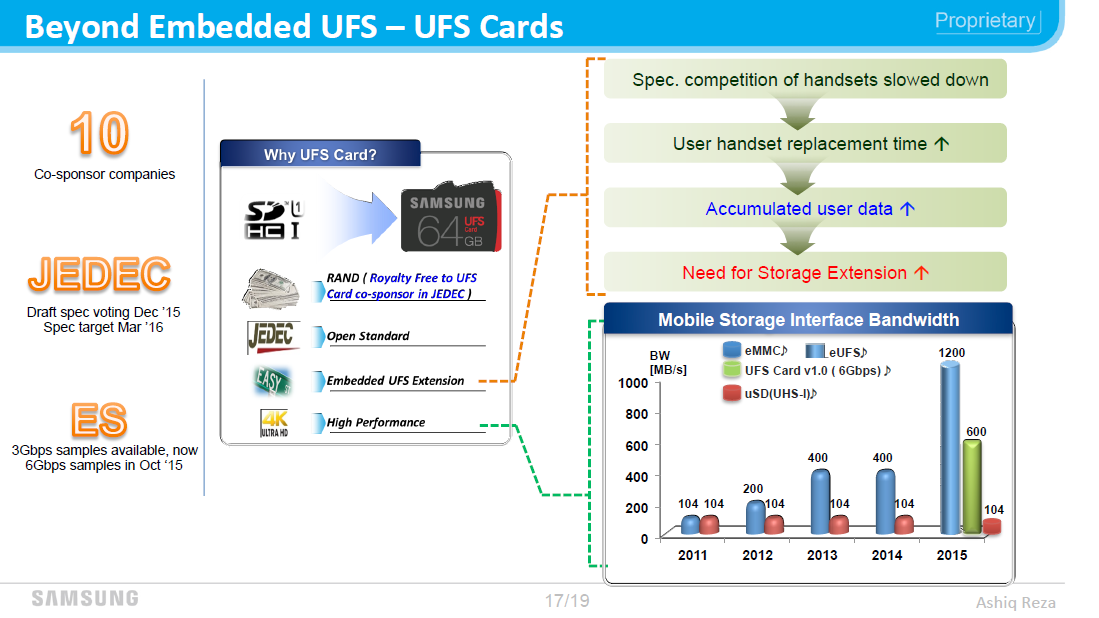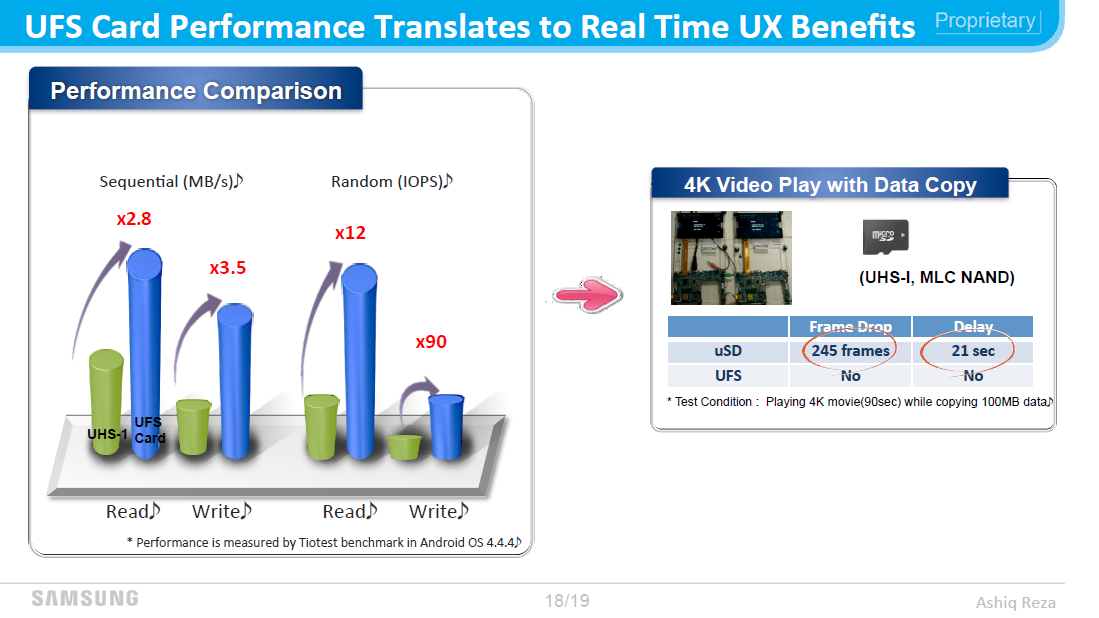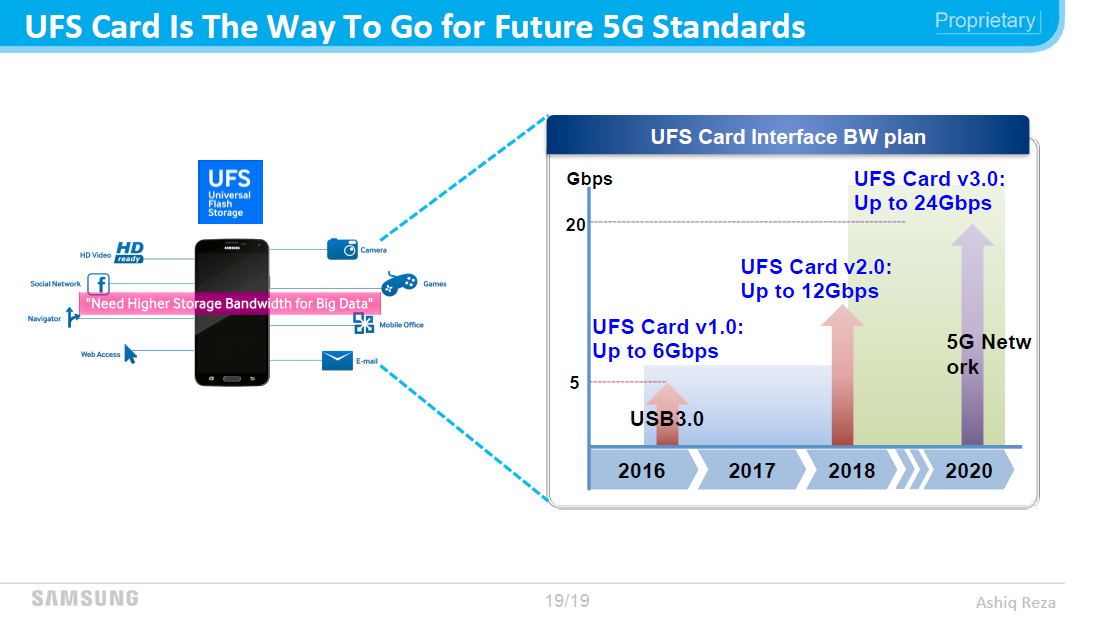Samsung ha appena annunciato delle nuove schede di memoria che potrebbero sostituire un giorno le micro-SD. I vantaggi rispetto a queste ultime sembrano essere estremamente interessanti già nella prima iterazione della tecnologia, almeno sulla carta: la società parla infatti di velocità di trasferimento dei dati molto elevate, paragonabili a quelle di un’unità SSD per sistemi desktop per quanto riguarda il trasferimento in lettura. Il paragone con le micro-SD attuali è impietoso.

Le prime schede UFS vendute dalla società si baseranno sullo standard Universal Flash Storage 1.0 Card Extension, e saranno proposte in diversi tagli da 32 a 256GB. Potranno essere utilizzate in diversi dispositivi “mobile”, come smartphone, tablet, fotocamere, ma anche all’interno di robot avanzati e visori di realtà virtuale. Le prime schede UFS di Samsung vanteranno una velocità di lettura di 530MB/s, che diventano 170MB/s per quanto riguarda la scrittura dei dati
Stando alla nota pubblicata da Samsung un file da 5GB può essere letto su una UFS in 10 secondi, con una micro-SD attuale basata su tecnologia UHS-I è necessario aspettarne almeno 50. Con velocità così elevate è possibile gestire i video 4K in maniera agevole, soprattutto con un livello di compressione più basso e una qualità d’immagine più elevata. Ma la nuova tecnologia non arriva senza qualche limite e compromesso, e bisognerà aspettare un po’ prima che prenda piede.
Le UFS possono essere inserite solo in slot specifici, ancora non presenti su alcun dispositivo. Samsung non può infatti specificare quando la tecnologia arriverà nelle mani dei consumatori visto che la data dipende in larga parte dall’adozione da parte dei produttori di terze parti. Se da una parte è vero che Samsung possa spingere sul nuovo formato con la sua line-up di smartphone (potremmo trovarla su Galaxy Note 7), dall’altra la micro-SD ad oggi è praticamente ovunque.
Per i produttori di terze parti potrebbe essere più saggio puntare sulla vecchia tecnologia ancora per parecchi periodi di tempo, dal momento che lo standard micro-SD riesce a coprire efficacemente le esigenze odierne dell’utente medio. Di contro le schede UFS garantiscono prestazioni esaltanti: se i dati di lettura e scrittura sequenziale sono molto interessanti, quelli di lettura e scrittura random sono impressionanti: secondo Samsung rispettivamente di 20 volte e 350 volte rispetto alle micro-SD.
Samsung, che arriva dopo Toshiba nello specifico settore, non ha ancora proposto prezzi e disponibilità del nuovo formato. Entrambe le società non hanno ancora rilasciato sul mercato alcuna scheda basata sullo standard UFS 1.0 Card Extension, ma è probabile che si tratti di questione al massimo di mesi prima di vederle nei negozi.
Autore: Le news di Hardware Upgrade


